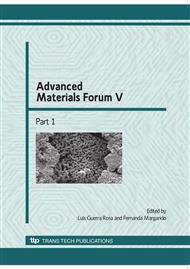p.1349
p.1355
p.1365
p.1371
p.1377
p.1383
p.1389
p.1397
p.1404
Photocatalytic Decolourisation of Orange II Aqueous Solutions by TiO2 and ZnO Active Layers Screen Printed on Ceramic Tiles
Abstract:
In this work TiO2 and ZnO layers have been deposited by screen-printing in common glazed ceramic tiles. These layers were evaluated for the photocatalytic degradation of Orange II in aqueous solutions, in a batch photoreactor under visible light. The photocatalytic behaviour was assessed by taking into account experimental variables which include: (i) firing temperature of the TiO2 printed layer; (ii) layer thickness; (iii) operation time; (iv) pH; and (v) dye concentration. Optimal processed layers showed an interesting decolourisation performance (over 90% efficiency after 7-8 h). It is anticipated that these new ceramic materials might be developed as an interesting alternative to TiO2 or ZnO suspensions, for example in photocatalytic applications excusing the particles removal at the end of the process.
Info:
Periodical:
Pages:
1377-1382
Citation:
Online since:
January 2010
Authors:
Price:
Сopyright:
© 2010 Trans Tech Publications Ltd. All Rights Reserved
Share:
Citation:


